|
|
|
Sort Order |
|
|
|
Items / Page
|
|
|
|
|
|
|
| Srl | Item |
| 1 |
ID:
087519
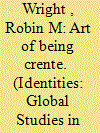

|
|
|
|
|
| Publication |
2009.
|
| Summary/Abstract |
The central objectives of this article are to describe and analyze the Baniwa Art Project, a sustainable development project based on intensive production and commercialization of basketwork, which the Baniwa Indians of the Northwest Amazon (population approximately 12,000), with the assessment of the SocioEnvironmental Institute (ISA), a major NGO in Brazil, launched in the late 1990s. The goals of this project were to enhance the value of the Baniwa basket-making tradition, increase production within the limits of the sustainable use of natural resources, generate income for indigenous producers and their political associations, and train indigenous leadership in the skills of business management. This very successful project was initiated shortly after the creation of the Indigenous Organization of the I ana River Basin (OIBI) and essentially involves 16 of the more than 100 Baniwa communities of the I ana River and its tributaries in Brazil. This article reflects on how young Baniwa evangelical political leaders, with the support of the NGO, promoted the rise of individualism, as well as the introduction of Western values of economic and political success. This generated conflicts with more "traditional" values and practices of egalitarianism producing an increase of witchcraft accusations. The case of a young Baniwa leader who coordinated both the political association and the Art Project illustrates extremely well the sorts of grave conflicts that emerged. This article will also reflect on modifications in human/spirit relations following the introduction of evangelicalism and sustainable development projects. For this, I shall cite extensively from a recent interview I conducted with a Baniwa political leader regarding his perceptions of the relations between evangelicalism, the political movement, and the meanings for the Indians of the notion of "sustainable development."
|
|
|
|
|
|
|
|
|
|
|
|
|
|
|
|
| 2 |
ID:
143320


|
|
|
|
|
| Summary/Abstract |
Why are some ethnopolitical movements divided while others are relatively unified? A growing literature examines the consequences of internal divisions in ethnopolitical movements – and shows that it matters for a range of conflict outcomes – yet the mechanisms causing such divisions remain poorly understood. Our argument emphasizes competitive dynamics between states and self-determination movements and between rival factions within these movements as key determinants of fragmentation. Drawing from literatures on social movements, contentious politics, and civil war, we situate our argument vis-à-vis three alternative and complementary sets of explanations based on theories emphasizing transnational dimensions, political institutions, and structural factors within ethnopolitical groups. Using an original dataset, we test hypotheses explaining movement fragmentation over time and use a case study of Punjab in India to identify specific causal mechanisms and missing variables. Our findings show some support for three of these theories, suggesting that ethnopolitical movements divide as a result of complex and interactive processes. But our findings also underscore that central to explaining fragmentation dynamics are factors capturing competitive dynamics, including repression, accommodation of movement demands, the turn to violence, and the dynamic and changing nature of ethnopolitical demands.
|
|
|
|
|
|
|
|
|
|
|
|
|
|
|
|
| 3 |
ID:
052483


|
|
|
| 4 |
ID:
097809
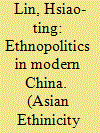

|
|
|
|
|
| Publication |
2010.
|
| Summary/Abstract |
This article reveals the murky political landscape of Alashaa Banner in Inner Mongolia during the Sino-Japanese war (1937-1945). By using various archival documents and secondary source materials, this research seeks to present a clearer picture of Inner Mongolian borderlands, involving the Chinese Nationalists, the Sinicized Muslims, and the Inner Mongols. Instead of restating the 'ineffectiveness' or 'weakness' of the Nationalist frontier administration in China's innermost borderlands during the pre-1949 decades, this article attempts to explore the extent of the war-threatened Nationalist Chinese effort to initiate their state-building tasks and promote their regime's power consolidation in modern China's northern periphery.
|
|
|
|
|
|
|
|
|
|
|
|
|
|
|
|
| 5 |
ID:
165106
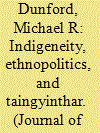

|
|
|
|
|
| Summary/Abstract |
In Myanmar, the idea of ‘indigeneity’ has been mobilised in two radically different ways. Ethnonationalist groups such as the Chin National Front and the Karen National Union have utilised the concept to lobby for increased autonomy in international forums such as the United Nations, while the Burmese state has used the idea of indigeneity (or native-ness, typically translated as taingyinthar in Burmese) to exclude certain minorities — most prominently the Rohingya — by explicitly striking them from the official list of Myanmar's ‘national races’. To clarify how this definitional tension has developed, this article will situate the competing Burmese appeals to indigeneity within the history of international indigeneity politics, and compare the Burmese ‘Indigenous situation’ to other Asian countries that have addressed the question of who counts and does not count as Indigenous.
|
|
|
|
|
|
|
|
|
|
|
|
|
|
|
|
| 6 |
ID:
046250
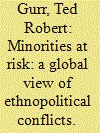

|
|
|
|
|
| Publication |
Washington, D. C., United States Institute of Peace Press, 1998.
|
| Description |
xii, 427p.
|
| Standard Number |
0878379240
|
|
|
|
|
|
|
|
|
|
|
|
Copies: C:2/I:0,R:0,Q:0
Circulation
| Accession# | Call# | Current Location | Status | Policy | Location |
| 045903 | 305.8/GUR 045903 | Main | On Shelf | General | |
| 046163 | 305.8/GUR 046163 | Main | On Shelf | General | |
|
|
|
|
| 7 |
ID:
104827
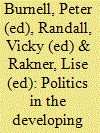

|
|
|
|
|
| Edition |
3rd ed.
|
| Publication |
Oxford, Oxford University Press, 2011.
|
| Description |
xxxviii, 537p.Pbk
|
| Standard Number |
9780199570836
|
|
|
|
|
|
|
|
|
|
|
|
Copies: C:1/I:0,R:0,Q:0
Circulation
| Accession# | Call# | Current Location | Status | Policy | Location |
| 056073 | 909.097240825/BUR 056073 | Main | On Shelf | General | |
|
|
|
|
| 8 |
ID:
099701
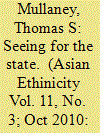

|
|
|
|
|
| Publication |
2010.
|
| Summary/Abstract |
This article proposes a new understanding of the Ethnic Classification project (minzu shibie) undertaken in China's southwesternmost province of Yunnan in 1954 - a project in which social scientists and Communist Party cadres set out to determine which of the dozens, if not hundreds, of minority communities in the province would be officially recognized by the state. Specifically, this article argues that ethnologists and linguists played a far greater role in the Classification and early Chinese Communist governmentality than is typically assumed. The Chinese Communists did not teach themselves how to 'see like a state,' to use James Scott's formulation, at least not when it came to the fundamentally important problem of ethnic categorization. To the contrary, the history of the Classification project is one of an inexperienced Chinese state that was able to orient itself only by observing the world through the eyes of its social scientific advisors. The 'mentality' within early Chinese Communist Party (CCP) 'governmentality' was, in the case of the 1954 Ethnic Classification, in large part the mentality of the comparative social sciences.
|
|
|
|
|
|
|
|
|
|
|
|
|
|
|
|
| 9 |
ID:
086305
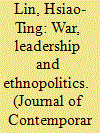

|
|
|
|
|
| Publication |
2009.
|
| Summary/Abstract |
This article examines how China's war with Japan served as a crucial factor that shaped modern China's ethnopolitics. It argues that the Japanese invasion of China in 1941-1945 provided the Nationalists with an unprecedented opportunity to push their authority further westward into the Central Asian heartlands. The Nationalists' marching westward as a result of the Japanese invasion also urged them to factor frontier and ethnopolitics into their wartime strategic thinking and institutional reforms. To a great extent, the war and its repercussions caused a redefinition of modern China's border security and defense in both northwestern and southwestern China. The war with Japan turned the Nationalists westward, a new perspective which shifted the power relationship between the Nationalists and China's frontier regional leaders. This historical phenomenon resulted in the extension of Nationalist power to, and the building of, new institutions and infrastructures, in China's remotest ethnic frontier. It also contributed to modern China's first contact with the Middle East. The westward expansion during wartime also transformed modern China from a maritime economy rooted in East Asian trade to a continental one based on overland trade routes through the heartland of Asia.
|
|
|
|
|
|
|
|
|
|
|
|
|
|
|
|
| 10 |
ID:
086322
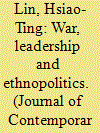

|
|
|
|
|
| Publication |
2009.
|
| Summary/Abstract |
This article examines how China's war with Japan served as a crucial factor that shaped modern China's ethnopolitics. It argues that the Japanese invasion of China in 1941-1945 provided the Nationalists with an unprecedented opportunity to push their authority further westward into the Central Asian heartlands. The Nationalists' marching westward as a result of the Japanese invasion also urged them to factor frontier and ethnopolitics into their wartime strategic thinking and institutional reforms. To a great extent, the war and its repercussions caused a redefinition of modern China's border security and defense in both northwestern and southwestern China. The war with Japan turned the Nationalists westward, a new perspective which shifted the power relationship between the Nationalists and China's frontier regional leaders. This historical phenomenon resulted in the extension of Nationalist power to, and the building of, new institutions and infrastructures, in China's remotest ethnic frontier. It also contributed to modern China's first contact with the Middle East. The westward expansion during wartime also transformed modern China from a maritime economy rooted in East Asian trade to a continental one based on overland trade routes through the heartland of Asia.
|
|
|
|
|
|
|
|
|
|
|
|
|
|
|
|
|
|
|
|
|